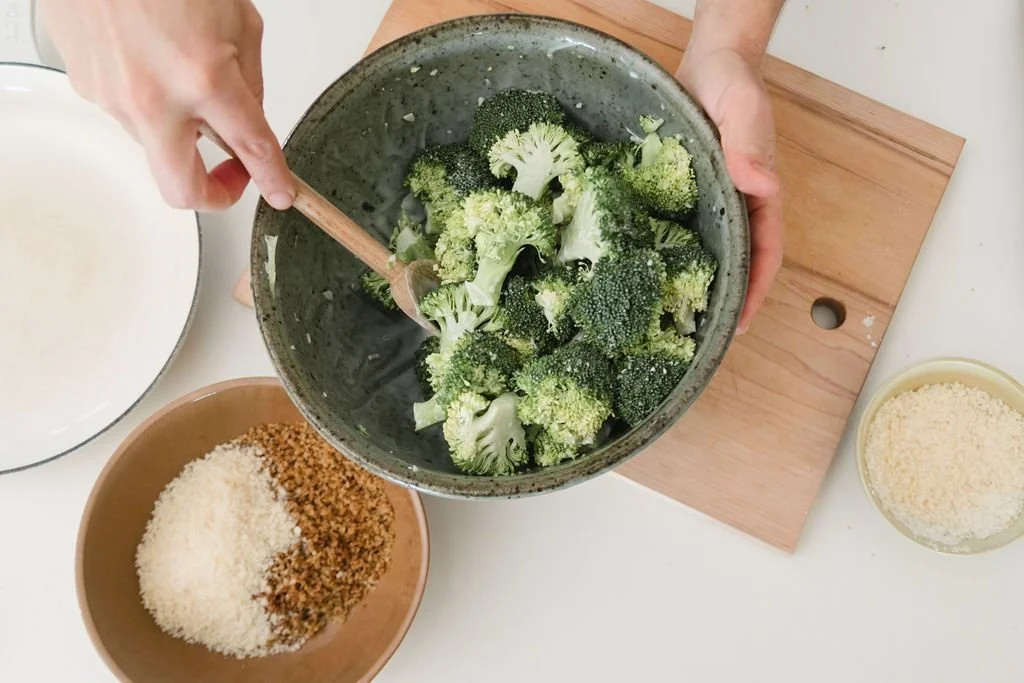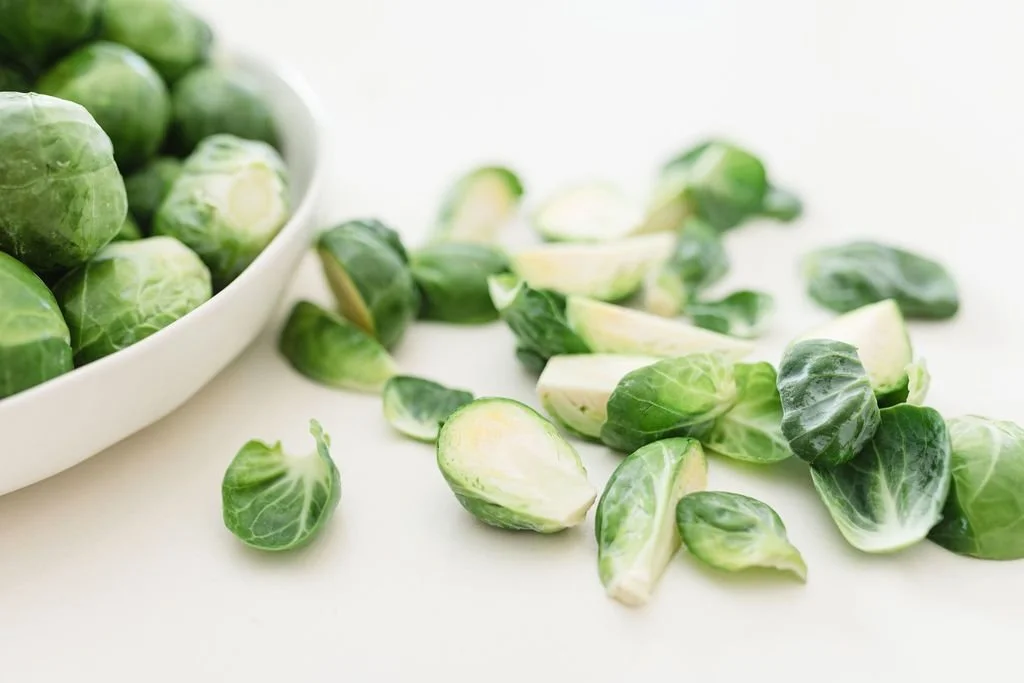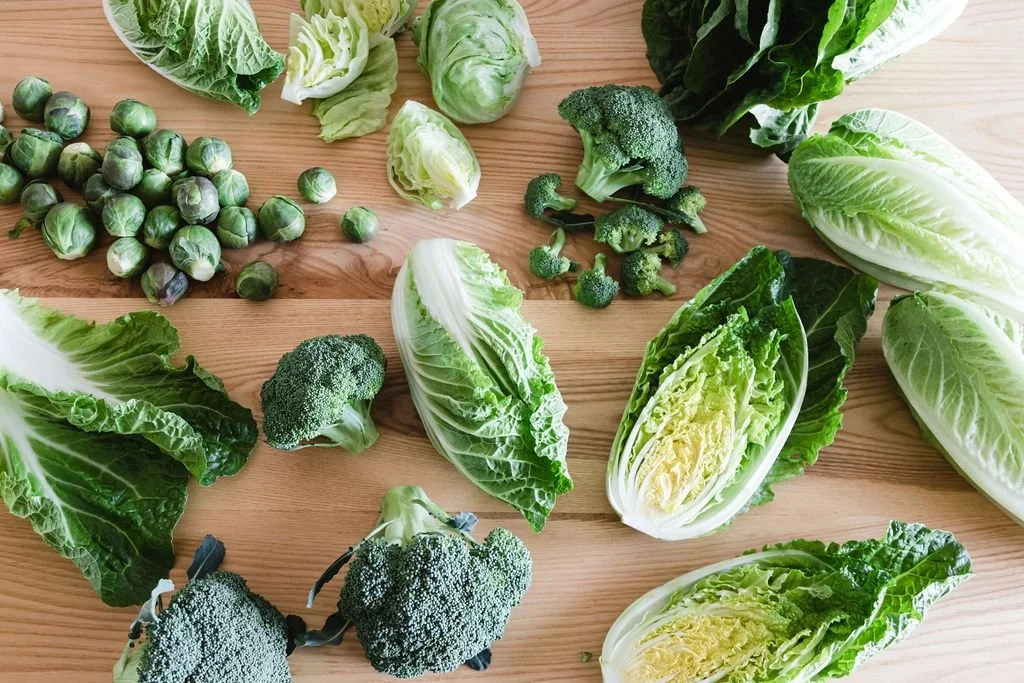Our moms meant well — but they often boiled vegetables until they were mush.
They were just trying to get us to like new flavors, but those soggy Brussels sprouts and limp broccoli didn’t stand a chance.
If we’d had them steamed instead, we might’ve loved them from the start.
At Hitchcock Farms, we’re all about helping you enjoy vegetables at their best — and that starts with choosing the right way to cook them.
What is Steaming?
Steaming cooks vegetables with hot steam rather than direct water contact.
The veggies sit in a basket above simmering water, allowing moist heat to cook them gently and evenly.
This method helps retain more nutrients, preserves color and texture, and enhances natural flavor.
Pros:
Retains more nutrients than boiling
Keeps vibrant color and crisp texture
Naturally low in fat and calories
Quick, clean, and easy
Cons:
Not ideal for every vegetable
Requires a steamer basket or insert
Lacks the deeper flavor that comes from browning or caramelization
Best for:
Carrots
Cauliflower
Asparagus
Zucchini
Green beans
Baby spinach
What is Boiling?
Boiling involves fully submerging vegetables in rapidly boiling water until they’re cooked through.
It’s fast, simple, and great for hearty vegetables like potatoes, beets, and corn on the cob.
But there’s a tradeoff — boiling tends to wash away water-soluble vitamins (like vitamin C and B vitamins), and it can leave delicate vegetables mushy and dull in flavor and color if overcooked.
Pros:
Quick and easy
Softens dense or fibrous vegetables
Ideal for prepping veggies for purees or freezing
Cons:
High risk of nutrient loss
Can easily become overcooked and bland
Less flavor is retained compared to steaming or roasting
Best for:
Potatoes
Corn on the cob
Beets
Artichokes
Green beans (if blanching)
Frozen vegetables being prepped for other dishes
Boiling vs. Steaming: Head-to-Head Comparison
| Feature | Steaming | Boiling |
|---|---|---|
| How It Works | Cooks vegetables with moist heat from steam, without direct water contact. | Fully submerges vegetables in rapidly boiling water until tender. |
| Nutrient Retention | High — preserves most water-soluble vitamins and phytochemicals. | Lower — nutrients like vitamin C and B vitamins can leach into the water. |
| Flavor | Clean, fresh, and concentrated. | Often milder or diluted. |
| Texture | Crisp-tender and vibrant. | Softer; can become mushy if overcooked. |
| Appearance | Bright color and appealing presentation — great for picky eaters. | Colors can fade; may look dull or overcooked. |
| Cooking Time | Quick — typically 3–10 minutes depending on the vegetable. | Varies — usually quicker for dense vegetables like potatoes. |
| Best For | Tender greens, peas, broccoli, Brussels sprouts, carrots, zucchini, bok choy. | Starchy or dense vegetables like potatoes, beets, corn, and artichokes. |
| Health Factor | Keeps veggies close to their raw nutritional value. | Loses more nutrients during cooking. |
| Equipment Needed | Requires a steamer basket or insert. | Just a pot of boiling water. |
| Flavor Customization | Easy to enhance with seasonings, herbs, or infused steam (e.g., garlic, soy). | Limited — most seasoning happens after cooking. |
| Great For | Healthy, vibrant side dishes with texture and nutrients intact. | Prepping vegetables for mashing, purees, or hearty dishes. |
How to Steam Vegetables (The Right Way)
Step 1: Fill a pot with 1–2 inches of water and bring it to a boil over medium-high heat. Place a steamer basket or insert above the water (make sure the vegetables won’t touch the water).
Step 2: Prep your vegetables by washing and cutting them evenly for consistent cooking. Then, add them to the steamer and cover with a tight-fitting lid.
Step 3: Steam according to the vegetable type and size:
Broccoli: 10 minutes
Brussels sprouts (halved): 8–10 minutes
Bok choy: 4–6 minutes
Napa cabbage: 5–7 minutes
English peas: 3–5 minutes
Fava beans: 5–6 minutes
Kale: 5–7 minutes
Carrots: 15 minutes
Cauliflower: 8–10 minutes
Asparagus: 5–6 minutes
Zucchini: 15 minutes
Green beans: 5–7 minutes
Baby spinach: 3–5 minutes
Step 4: Check for doneness — the vegetables should be tender but still have a bit of bite, with bright color and fresh aroma.
Step 5: Remove from the steamer immediately to avoid overcooking. Serve as-is or dress them up with olive oil, lemon, herbs, or a splash of soy sauce.
How to Boil Vegetables (Without Ruining Them)
Step 1: Start with fresh, evenly cut vegetables — this ensures they cook at the same rate. Dense veggies like potatoes, beets, and artichokes should be left whole or halved, depending on size.
Step 2: Fill a pot with water and bring it to a rapid boil. Add a pinch of salt — this enhances flavor and helps preserve color.
Step 3: Add your vegetables and adjust the cooking time based on type:
Potatoes: 20 minutes
Corn on the cob: 7–10 minutes
Beets (whole): 30–45 minutes
Artichokes (whole): 25–40 minutes
Carrots: 12 minutes
Zucchini: 12 minutes
Broccoli: 5 minutes
Green beans (blanched): 4–6 minutes
Step 4: Check for doneness with a fork — vegetables should be tender but not falling apart, and still look vibrant in color.
Step 5: Immediately transfer them to a bowl of ice water to stop the cooking process. This helps lock in nutrients, prevent overcooking, and preserve texture and color.
Bringing Out the Best in Every Vegetable
If you still think of vegetables as plain, get acquainted with our quality produce grown here in California.
Hitchcock Farm's growing practices bring out the best in Brussels sprouts, broccoli, and a wonderful variety of fresh veggies.
It’s time to fall in love with the delicious flavors, crisp textures, and nutritional benefits that were there even when you were a kid.
Vegetables deserve the gentle power of steam, and you deserve to enjoy them again.
FAQ
Which vegetables should not be steamed?
Very soft or watery vegetables like cucumbers, lettuce, and tomatoes don’t steam well because they turn mushy.
Dense, starchy vegetables like potatoes are also better boiled or roasted for even cooking and a better texture.
How long should you steam vegetables for?
Most vegetables steam in 3 to 7 minutes, depending on size and type. They should be crisp-tender and brightly colored when done.
Do vegetables lose nutrients when steamed?
Yes, but very little. Steaming is one of the best cooking methods for preserving nutrients.
While some water-soluble vitamins like vitamin C and B vitamins may slightly decrease with heat, steaming minimizes this loss compared to boiling, where nutrients leach into the water.








